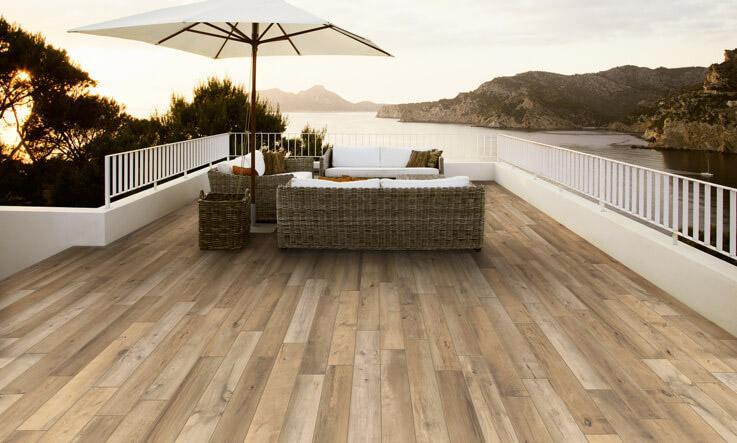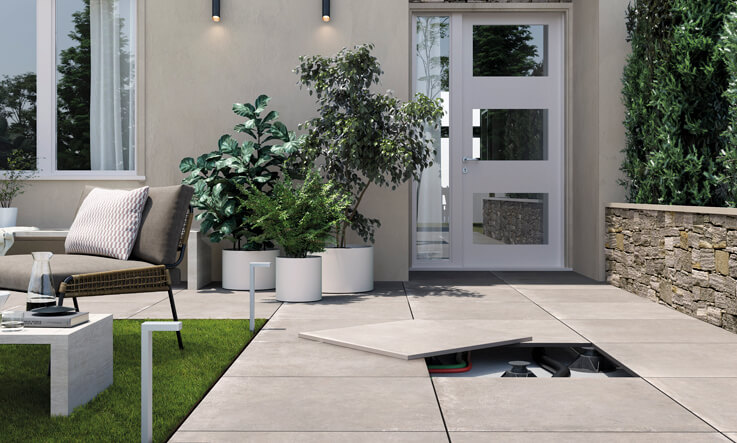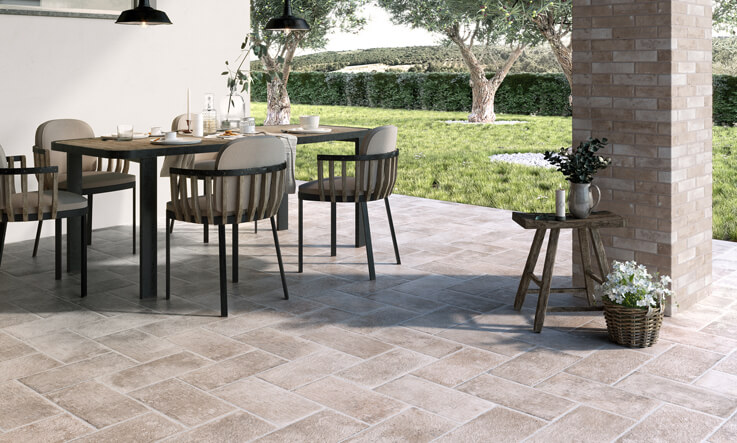
Spring has arrived. Outdoor floors, which one to choose?
With spring coming, and the strange winter just past, it's time to think about how to tidy up and improve our outdoor spaces.
Gardens and outdoor spaces in general are often overlooked and overshadowed when thinking of the house as a whole. Yet exteriors are the first thing we notice when we visit friends or acquaintances and a well-kept and furnished outdoor, is certainly a much more convincing invitation to enter than a messy or neglected garden.
Regarding garden furniture, the offer is wide and well-structured and porcelain stoneware outdoor flooring has seen only recently a considerable quantitative and qualitative growth. The technical characteristics of stoneware such as resistance to temperature changes, frost, stains and abrasions, not to mention the inalterability of the colors in the light make it, in fact, a completely suitable material for outdoor applications.
High-thickness slabs

In recent years, technological innovation has allowed the creation of high-thickness tiles (2cm) for outdoor use, which combine the non-slip surface with the possibility of installations with simple support and without the use of adhesives.
Available in different effects, to satisfy any type of style, ranging from wood, to concrete, to stone, these slabs are suitable for direct installation on grass, gravel or sand to easily create walkways, paths with Japanese steps, or areas to allocate gazebos.
As for terraces, penthouses or private and commercial dehors, fixed or adjustable supports of different heights are available, which allow the passage of pipes and channels below the floor without the need to bury them or include them in the substrate, in order to guarantee an easy and immediate maintenance.
Finally, for the areas facing the garage, high thickness tiles are ideal for drive-over floors, once they are installed with the traditional method, that consists in gluing them to the screed.
Outdoor tiles

As far as traditional tiles are concerned, the need is to glue them to the substrate in order to create a stable and long-lasting external flooring. It is easy to understand, therefore, how the choice for 1 cm thick outdoor tiles is to be preferred, for costs and ease of installation wherever a glued installation that does not require extra performances as regards to breaking load resistance is required. In practical terms, if you just have to walk on it, the traditional stoneware tile will be the best choice for your sidewalks, paths or balconies.
Even in this case, however, the available choice you have in terms of aesthetic effects is vast, with the caution to always select a non-slip surface which is normally indicated by an R that is followed by a number (in reality the classifications vary depending on the country, but we will talk about this in a future article). For outdoor solutions we recommend products that have at least a R11 classification, to ensure a sufficient grip even in wet conditions, on the other hand the higher this number the more the surface will be "dry" and will generate greater friction, that means that it will be more complicated to clean. This is an obvious compromise between safety and ease of cleaning, which can fortunately be solved outdoors by using a greater quantity of water during cleaning in order to facilitate the sliding of the brush.